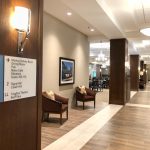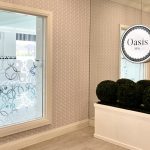Wayfinding Sign Design: Differences between Senior Living Residences and Health Care Facilities
In today’s complex architectural landscapes, the importance of guiding individuals seamlessly cannot be overstated. Navigating unfamiliar spaces can be not only daunting but, in certain environments, can also significantly impact safety and well-being. Hence, the role of wayfinding sign design becomes undeniably crucial in ensuring ease and clarity, particularly in specialized places like senior living residences and healthcare facilities. While both prioritize effective guidance, their distinct goals and users necessitate unique design choices.
Choosing the right wayfinding company to design an optimal solution is paramount. The design intricacies extend beyond mere directionality; they encapsulate the essence of the building’s purpose, the unique needs of its occupants, and the desired ambiance. A seasoned wayfinding company will recognize that while both senior living residences and healthcare facilities prioritize effective guidance, their distinct goals, users, and environmental characteristics necessitate tailored design choices. Partnering with an experienced company can significantly enhance the user experience, ensuring that signs don’t just direct, but also resonate with the purpose and atmosphere of the building.
1. Primary Audience
- Senior Living Residences: Catering to seniors, their families, and visitors, the design should prioritize aging eyes and potentially reduced cognitive functions. A focus on simplicity, high contrast, and large lettering becomes paramount.
- Health Care Facilities: A diverse audience, from patients of varying ages to medical staff and visitors, necessitates universally comprehensible signs.
2. Atmosphere & Aesthetics
The ambiance of a place greatly influences the user’s experience and comfort. Signage plays a subtle yet significant role in enhancing this ambiance.
Senior Living Residences
- Home-like Ambiance: The primary goal is to create a familiar and comfortable environment. Signs might incorporate materials and designs reminiscent of home décor—wooden finishes, softer fabrics, or ornate patterns. They could even be integrated into decorative elements, such as framed artwork or crafted installations, ensuring residents feel at home.
- Colour Psychology: Soft, warm colours often evoke feelings of comfort and calm, making them suitable for senior residences.
Health Care Facilities:
- Professional & Sterile: The atmosphere in medical settings leans towards professionalism and sterility. Materials used for signs, like metals, laminates, or high-grade plastics, reflect this, ensuring easy cleaning and maintenance.
- Use of Bold Colors: Bright colours can serve as clear markers, guiding individuals swiftly and reducing cognitive load during potentially stressful times.
3. Length of Stay
- Senior Living Residences: Given that residents tend to stay long-term, signs can assume a level of familiarity over time, striking a balance between clarity and aesthetic integration.
- Health Care Facilities: The transient nature of patients and the urgency of medical staff movements mean signs should be immediately evident and strategically placed.
4. Specific Needs & Challenges
Senior Living Residences
- Mobility Aids & Physical Limitations: With many residents relying on mobility aids such as wheelchairs, walkers, or canes, it’s essential that wayfinding designs consider this. Pathways need to be clear of obstructions, and signs should be at an eye level that is convenient for all. Ramps or other accessibility features should be clearly marked.
- Memory Issues: Given that conditions like Alzheimer’s or dementia might be prevalent in these residences, repetitive cues and consistent signage are vital. The use of imagery can be beneficial, as visual cues can sometimes be more effective than text for those with memory challenges.
Health Care Facilities
- Emergencies: In a medical crisis, every second counts. Clear signage pointing towards emergency exits, intensive care units, or other critical care areas is paramount. These signs often use universally recognized symbols and are illuminated for high visibility.
- Diverse Departments: A hospital or health care facility houses various departments, from pediatrics to radiology. Clear demarcation of these areas with colour coding or distinct symbols can aid swift navigation.
- Stressful Environment: Recognizing that many visitors are under stress, signs should be straightforward and reduce cognitive load. Furthermore, clear signage to waiting areas, restrooms, and amenities like cafes or lounges can provide some relief and comfort during tense times.
5. Frequency of Signage
Senior Living Residences:
- Home-like Atmosphere: In a bid to ensure that the environment feels as home-like as possible, there’s a need to minimize the overt use of signage. This helps residents feel less like they’re in an institutional setting and more like they’re at home.
Use of Landmarks: Instead of relying solely on signs, landmarks such as sculptures, fountains, or uniquely designed communal areas can act as intuitive pointers, helping residents orient themselves and navigate the space. - Unique Destinations: While minimizing overt signage is essential, it’s equally critical to guide residents to various facilities within the residence effectively. To address this, signs can be used to create unique destinations, such as a library corner, a community garden, or a craft room. This not only aids in wayfinding but also promotes engagement and activity among residents.
Health Care Facilities
- Immediate Clarity: Due to the dynamic and often urgent nature of medical settings, clear and frequent signage is a must. Especially at decision points, such as intersections or elevators, where immediate decisions about direction need to be made.
- Consistency is Key: To avoid confusion, the design, colour, and placement of signs should be consistent throughout the facility. This ensures that once a visitor or patient learns the system, they can navigate easily without second-guessing.
6. Evolution & Updates
- Senior Living Residences: Slow evolution means an emphasis on durable and timeless designs.
Health Care Facilities: The dynamic nature necessitates flexible, easily updated sign systems.
Conclusion
The architecture of today’s world is multifaceted and intricate, with each building designed with its own unique purpose and set of users in mind. Such diversity calls for a nuanced approach to every aspect of design, wayfinding being a pivotal one. As we’ve seen, the challenges posed by senior living residences and healthcare facilities differ substantially. However, the principles of understanding the user and the environment remain central. It’s not just about pointing in a direction; it’s about making the journey intuitive, efficient, and emotionally resonant.
Choosing an adept wayfinding company becomes paramount here. A building’s wayfinding system is its silent communicator, narrating the story of its space, guiding its inhabitants, and in many ways, shaping their experiences. An optimized design doesn’t just cater to the eye or provide direction; it encapsulates the essence of a place, echoing its purpose, its ambiance, and its inherent ethos.
Whether it’s the senior residents looking for comfort, familiarity, and ease, or the hurried footsteps in a hospital corridor seeking swift and unambiguous directions, the goal remains the same: to ensure every individual can navigate spaces seamlessly and safely. By recognizing and respecting the unique demands and characteristics of senior living residences and healthcare facilities, designers don’t just facilitate movement; they elevate every step of the journey, making spaces more navigable, comfortable, and resonant with their primary purpose.






